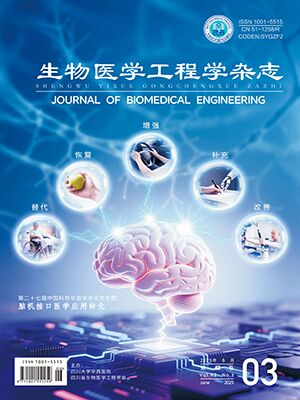| 1. |
Chi J, Yu X, Zhang Y. Thyroid nodule malignantrisk detection in ultrasound image by fusing deep and texture features. Journal of Image and Graphics, 2018, 23(10): 1582-1593.
|
| 2. |
Welker M J, Orlov D. Thyroid nodules. American Family Physician, 2003, 67(3): 559-567.
|
| 3. |
Hu Y, Qin P, Zeng J, et al. Ultrasound thyroid segmentation based on segmented frequency domain and local attention. Journal of Image and Graphics, 2020, 25(10): 2195-2205.
|
| 4. |
Wang J, Huang Q, Tang F, et al. Stepwise feature fusion: local guides global//International Conference on Medical Image Computing and Computer-Assisted Intervention. Cham: Springer Nature Switzerland, 2022: 110-120.
|
| 5. |
Tang F, Xu Z, Huang Q, et al. DuAT: dual-aggregation transformer network for medical image segmentation//Chinese Conference on Pattern Recognition and Computer Vision (PRCV). Singapore: Springer Nature Singapore, 2023: 343-356.
|
| 6. |
Ying X, Yu Z, Yu R, et al. Thyroid nodule segmentation in ultrasound images based on cascaded convolutional neural network//Neural Information Processing: 25th International Conference (ICONIP 2018), Springer International Publishing, 2018: 373-384.
|
| 7. |
Buda M, Wildman-Tobriner B, Castor K, et al. Deep learning-based segmentation of nodules in thyroid ultrasound: improving performance by utilizing markers present in the images. Ultrasound in Medicine & Biology, 2020, 46(2): 415-421.
|
| 8. |
Ouahabi A, Taleb-Ahmed A. RETRACTED: deep learning for real-time semantic segmentation: Application in ultrasound imaging. Pattern Recognition Letters, 2021: 27-34.
|
| 9. |
Pan H, Zhou Q, Latecki L J. SGUNET: semantic guided Unet for thyroid nodule segmentation//2021 IEEE 18th International Symposium on Biomedical Imaging (ISBI). IEEE, 2021: 630-634.
|
| 10. |
Peng Y, Yu D, Guo Y. MShNet: multi-scale feature combined with h-network for medical image segmentation. Biomedical Signal Processing and Control, 2023, 79: 104167.
|
| 11. |
Kang Q, Lao Q, Li Y, et al. Thyroid nodule segmentation and classification in ultrasound images through intra-and inter-task consistent learning. Medical Image Analysis, 2022, 79: 102443.
|
| 12. |
刘文婷, 卢新明. 基于计算机视觉的Transformer研究进展. 计算机工程与应用, 2022, 58(6): 1-16.
|
| 13. |
Strudel R, Garcia R, Laptev I, et al. Segmenter: transformer for semantic segmentation//Proceedings of the IEEE/CVF International Conference on Computer Vision, 2021: 7262-7272.
|
| 14. |
Chi J, Li Z, Sun Z. et al. Hybrid transformer UNet for thyroid segmentation from ultrasound scans. Computers in Biology and Medicine, 2023, 153: 106453.
|
| 15. |
Li C, Du R, Luo Q. et al. A novel model of thyroid nodule segmentation for ultrasound images. Ultrasound in Medicine & Biology, 2023, 49(2): 489-496.
|
| 16. |
Dosovitskiy A, Beyer L, Kolesnikov A, et al. An image is worth 16×16 words: transformers for image recognition at scale. arXiv preprint, 2020, arXiv: 2010.11929.
|
| 17. |
龚声蓉, 刘纯平, 王强. 图像分割技术. 数字图像处理与分析, 2006: 183-211.
|
| 18. |
Peng B, Alcaide E, Anthony Q, et al. RWKV: reinventing RNNs for the transformer era. arXiv preprint, 2023, arXiv: 2305.13048.
|
| 19. |
Zhuang C, Lu Z, Wang Y, et al. SPDET: edge-aware self-supervised panoramic depth estimation transformer with spherical geometry. IEEE Transactions on Pattern Analysis and Machine Intelligence, 2023, 45(10): 12474-12489.
|
| 20. |
Popescu M C, Balas V E, Perescu-Popescu L, et al. Multilayer perceptron and neural networks. WSEAS Transactions on Circuits and Systems, 2009, 8(7): 579-588.
|
| 21. |
Gong H, Chen G, Wang R, et al. Multi-task learning for thyroid nodule segmentation with thyroid region prior//2021 IEEE 18th International Symposium on Biomedical Imaging (ISBI). IEEE, 2021: 257-261.
|
| 22. |
Pedraza L, Vargas C, Narváez F, et al. An open access thyroid ultrasound image database//10th International Symposium on Medical Information Processing and Analysis. SPIE, 2015, 9287: 188-193.
|
| 23. |
陈英, 张伟, 林洪平, 等. 医学图像分割算法的损失函数综述. 生物医学工程学杂志, 2023, 40(2): 392-400.
|
| 24. |
Wei J, Wang S, Huang Q. F³Net: fusion, feedback and focus for salient object detection//Proceedings of the AAAI Conference on Artificial Intelligence. 2020, 34(7): 12321-12328.
|
| 25. |
Loshchilov I, Hutter F. Fixing weight decay regularization in Adam. arXiv preprint, 2017, arXiv: 1711.05101.
|
| 26. |
曹玉红, 徐海, 刘荪傲, 等. 基于深度学习的医学影像分割研究综述. 计算机应用, 2021, 41(8): 2273-2287.
|
| 27. |
Ma X, Sun B, Liu W, et al. AMSeg: a novel adversarial architecture based multi-scale fusion framework for thyroid nodule segmentation. IEEE Access, 2023, 11: 72911-72924.
|
| 28. |
Chen J, Lu Y, Yu Q, et al. TransUNet: Transformers make strong encoders for medical image segmentation. arXiv preprint, 2021, arXiv: 2102.04306.
|
| 29. |
Bi H, Cai C, Sun J, et al. BPAT-UNet: boundary preserving assembled transformer UNet for ultrasound thyroid nodule segmentation. Computer Methods and Programs in Biomedicine, 2023, 238: 107614.
|
| 30. |
Zhang C, Wei G, Qiu M. HCMUnet: a hybrid CNN and Mamba network for medical ultrasound image segmentation. Preprint, 2024, http://dx.doi.org/10.2139/ssrn.4920609.
|
| 31. |
Oktay O, Schlemper J, Folgoc L L, et al. Attention U-net: learning where to look for the pancreas. arXiv preprint, 2018, arXiv: 1804.03999.
|
| 32. |
Huang X, Deng Z, Li D, et al. MISSFormer: an effective medical image segmentation transformer. arXiv preprint 2021, arXiv: 2109.07162.
|




